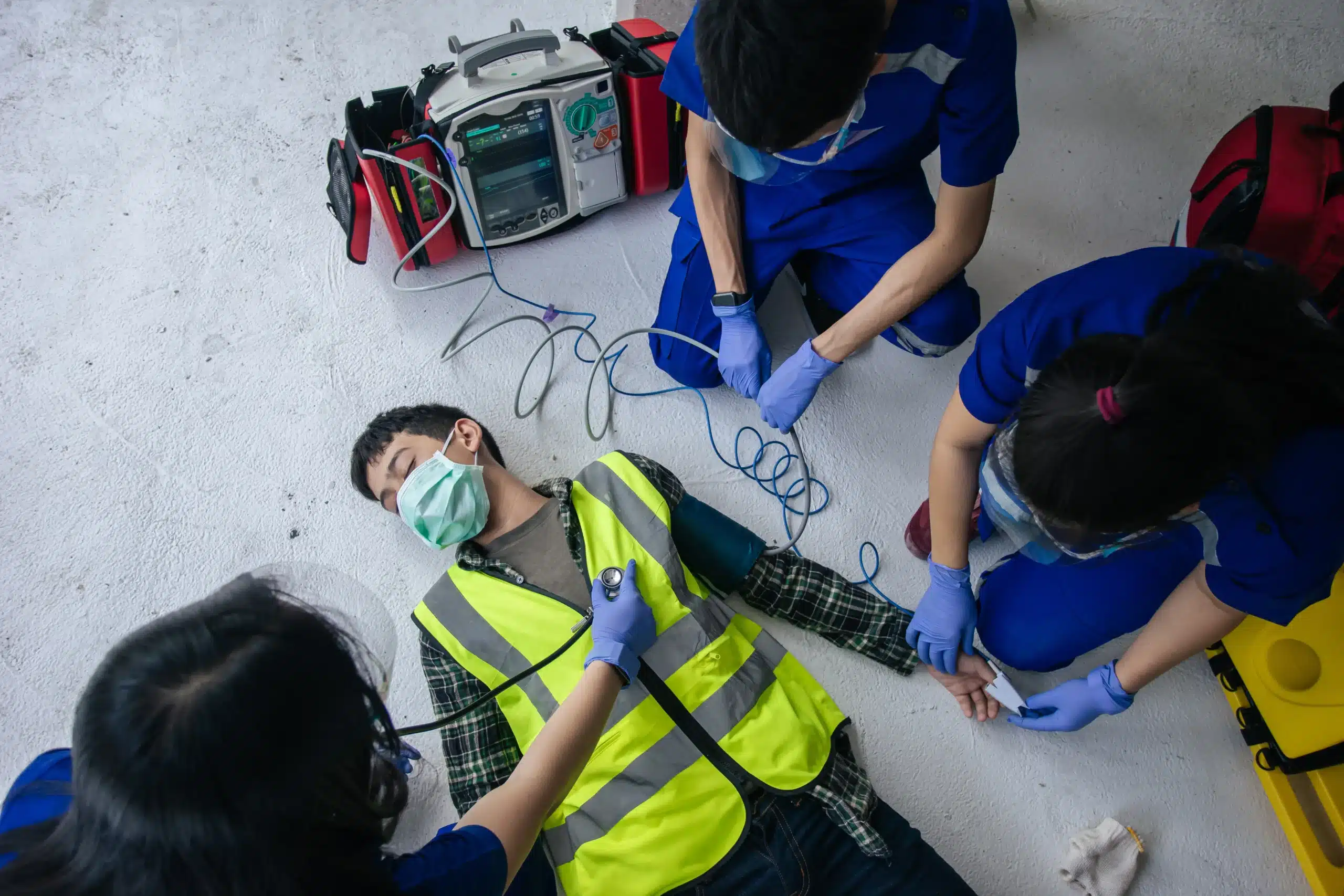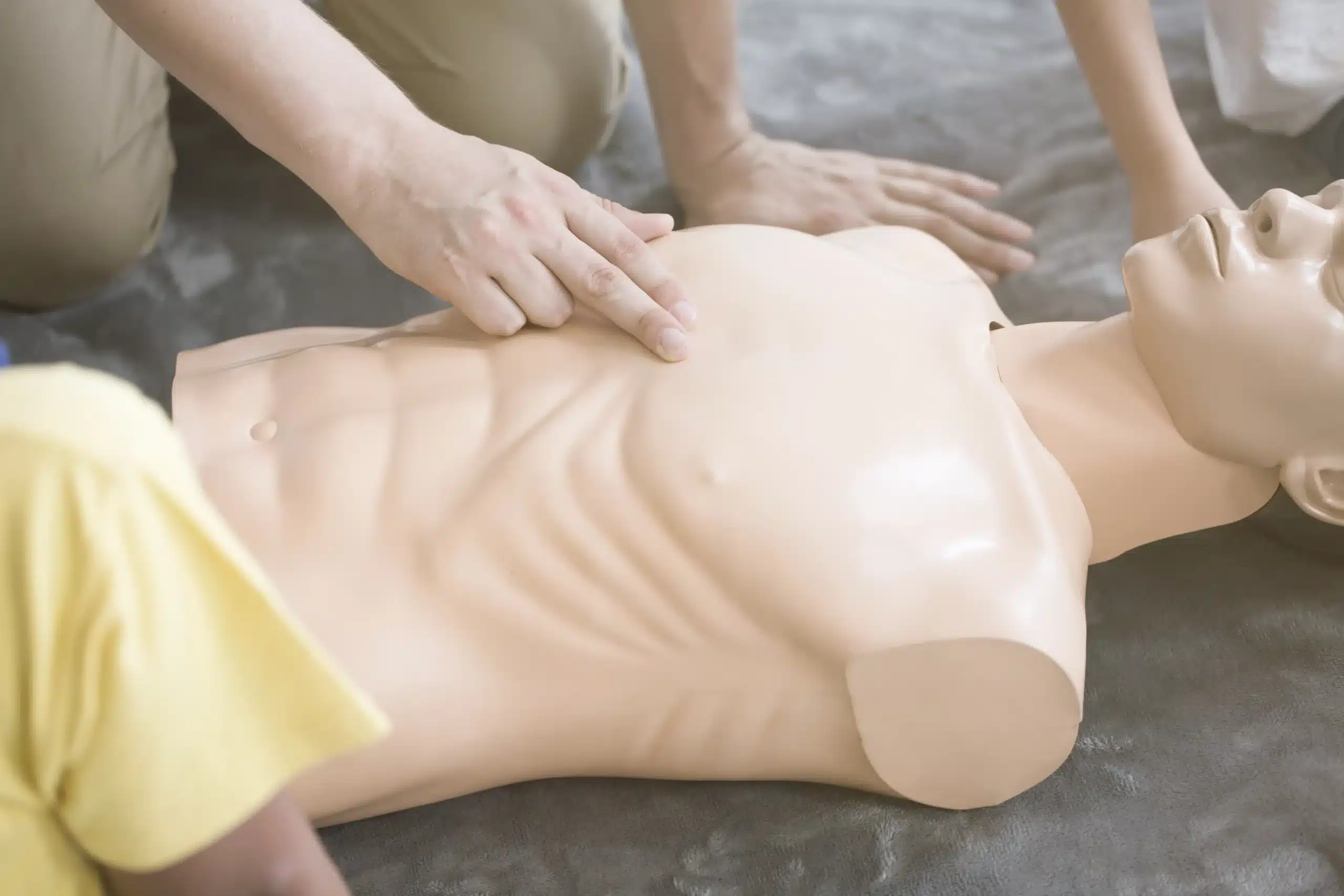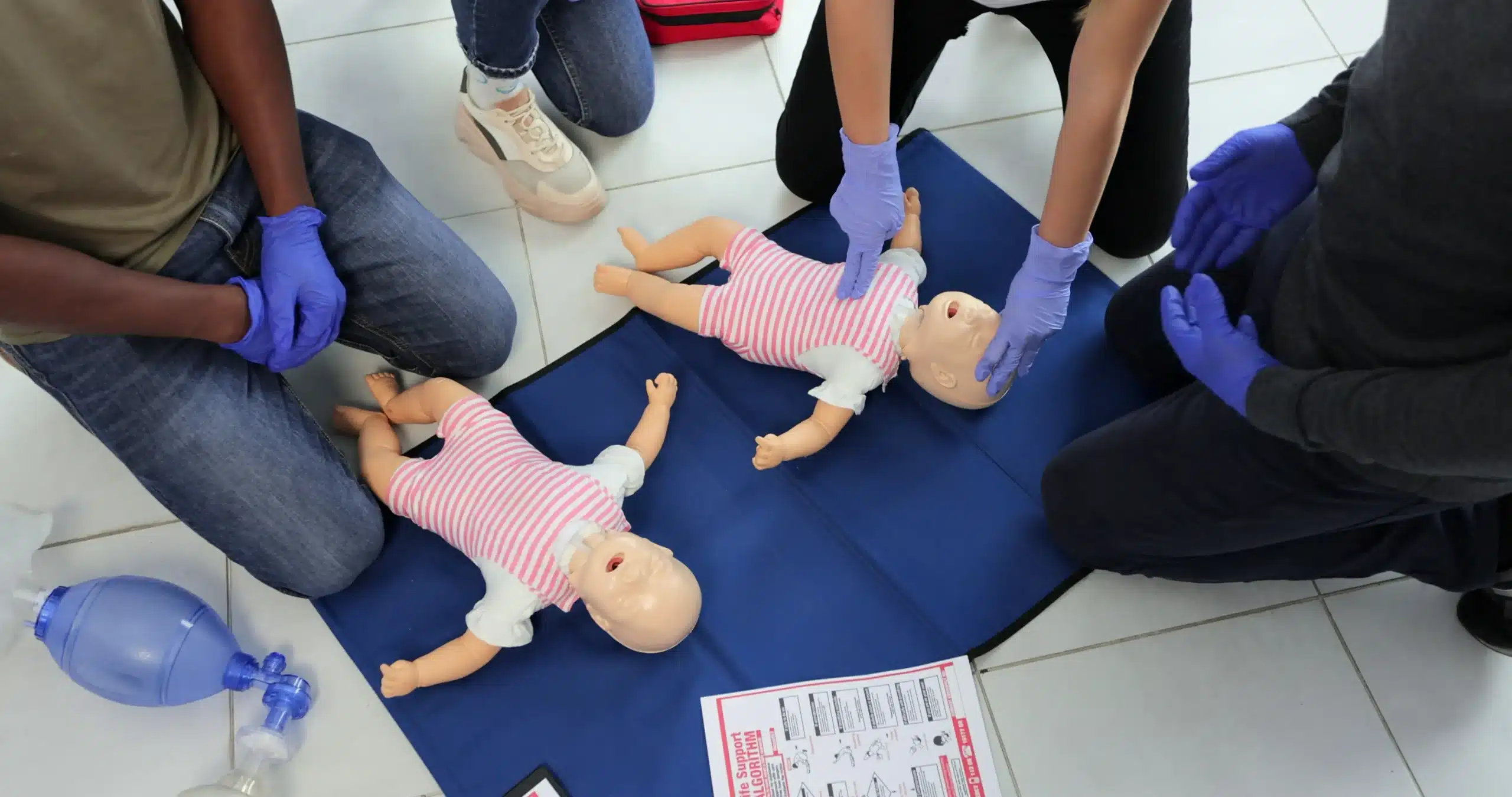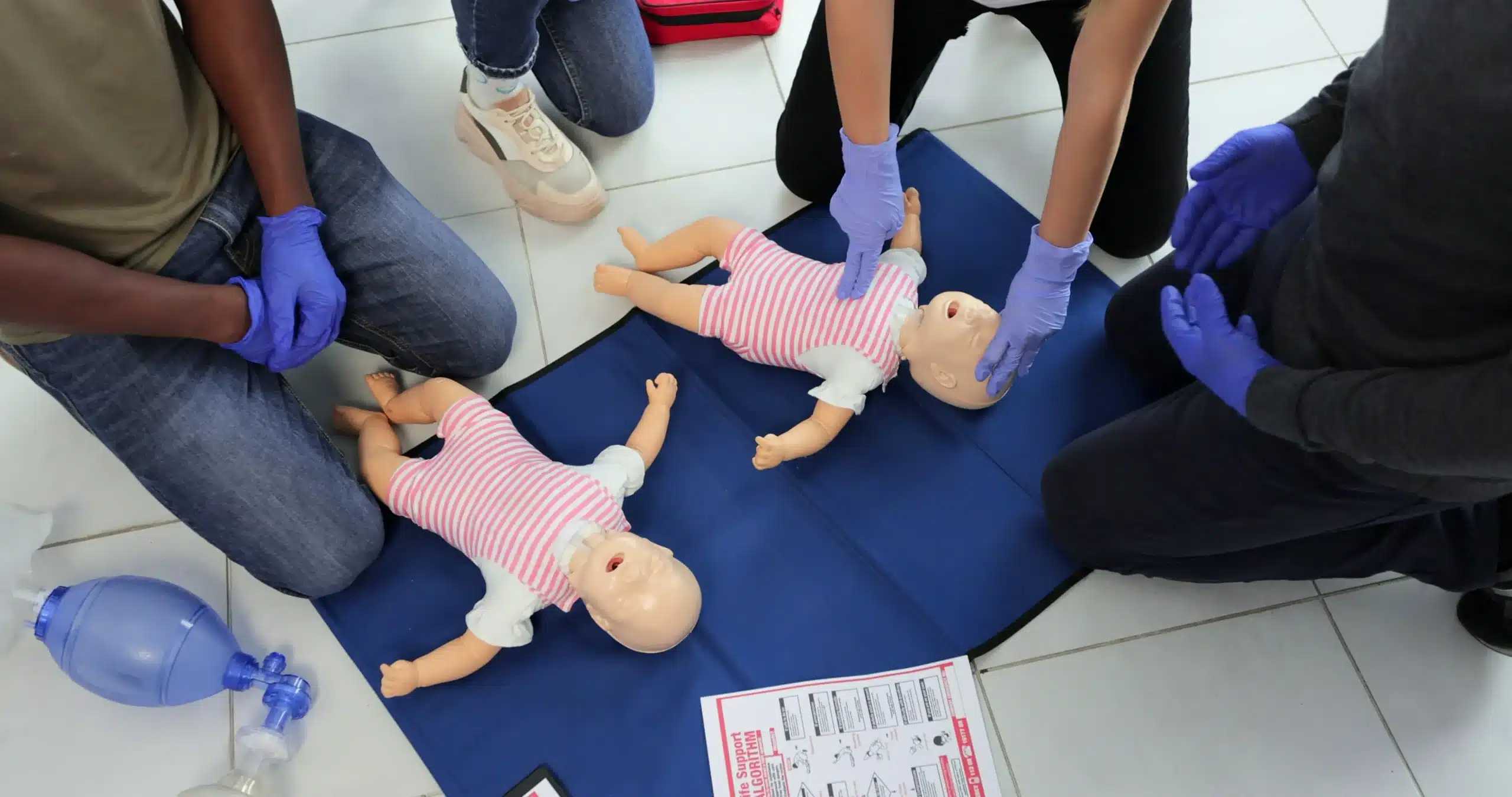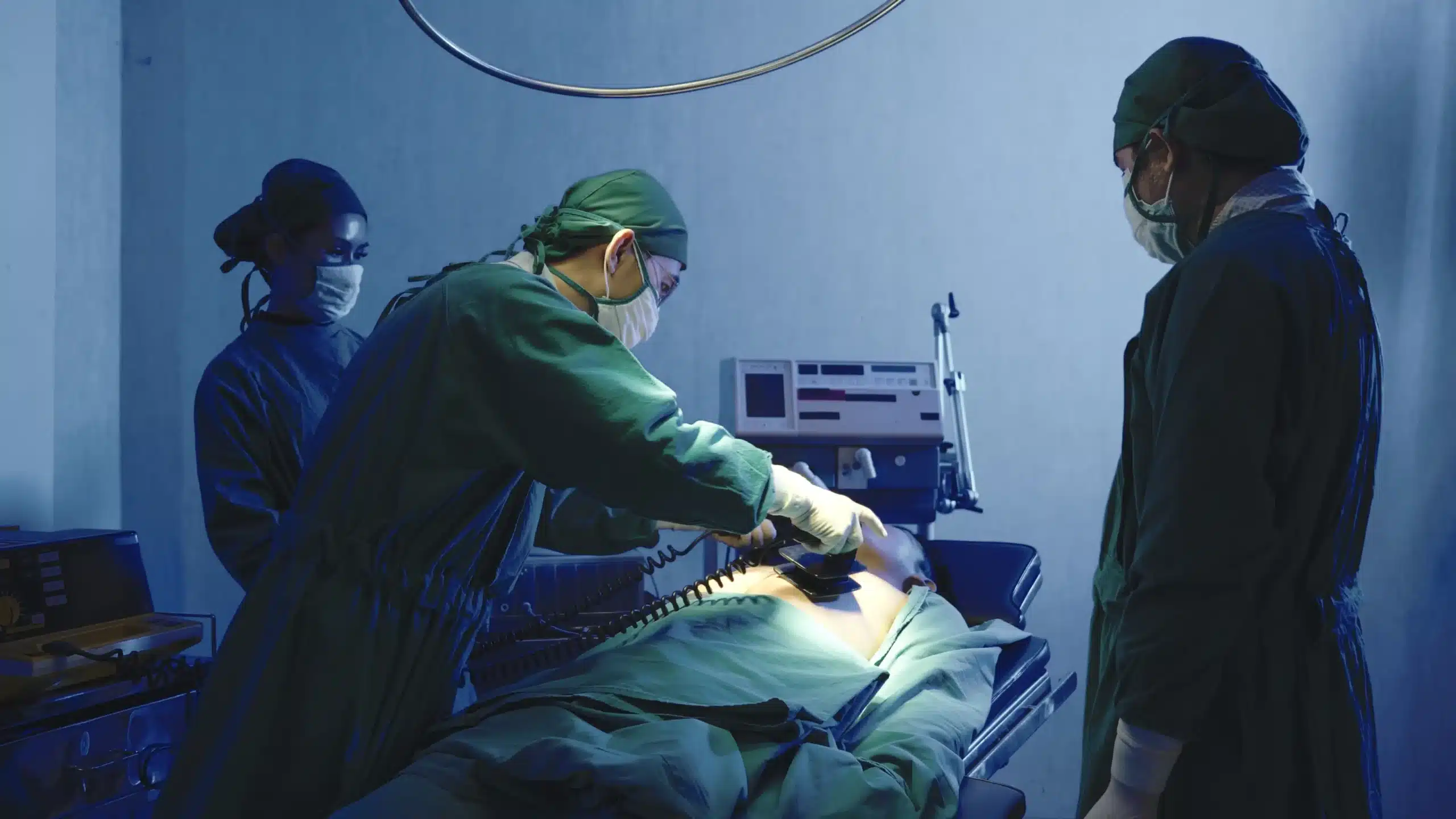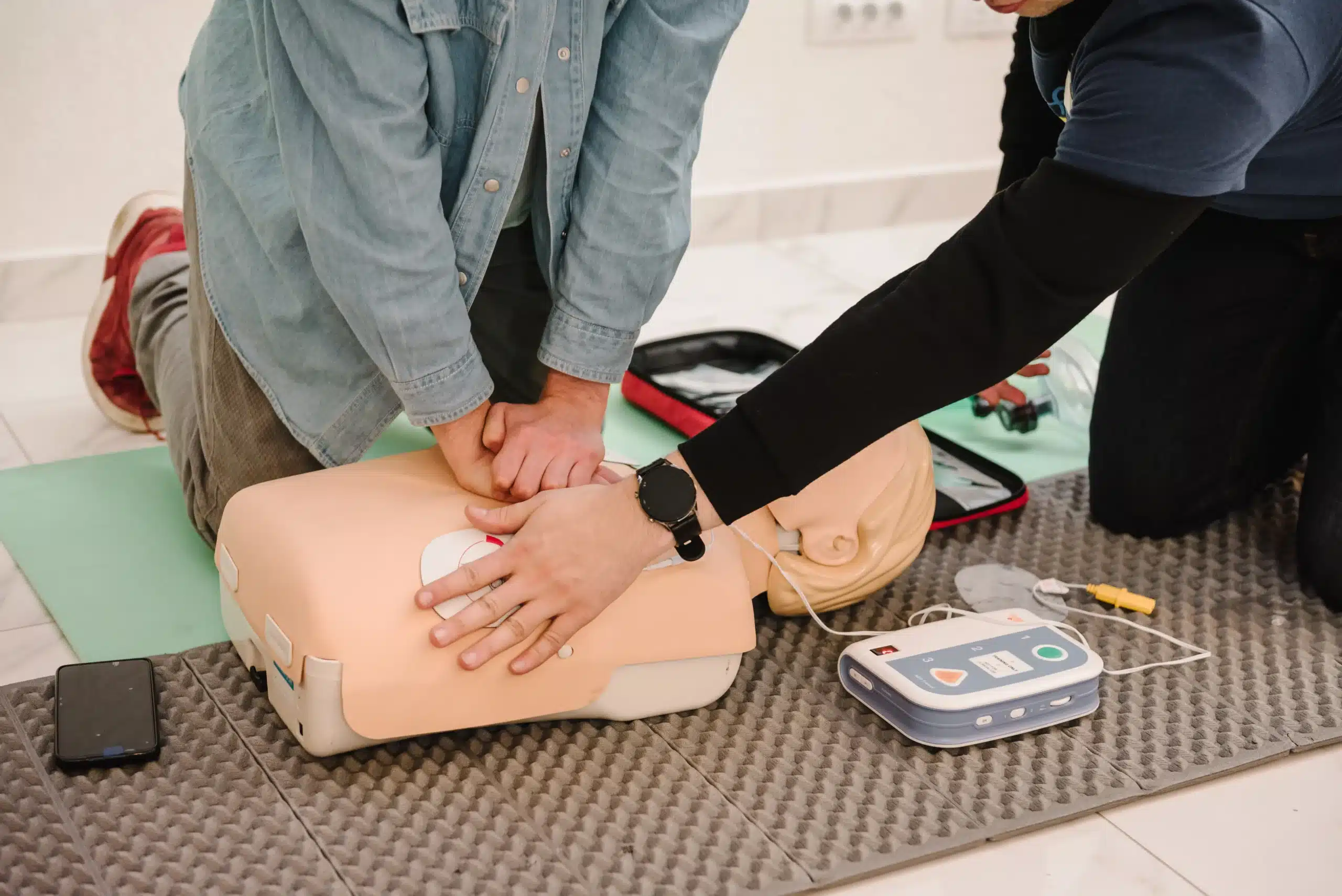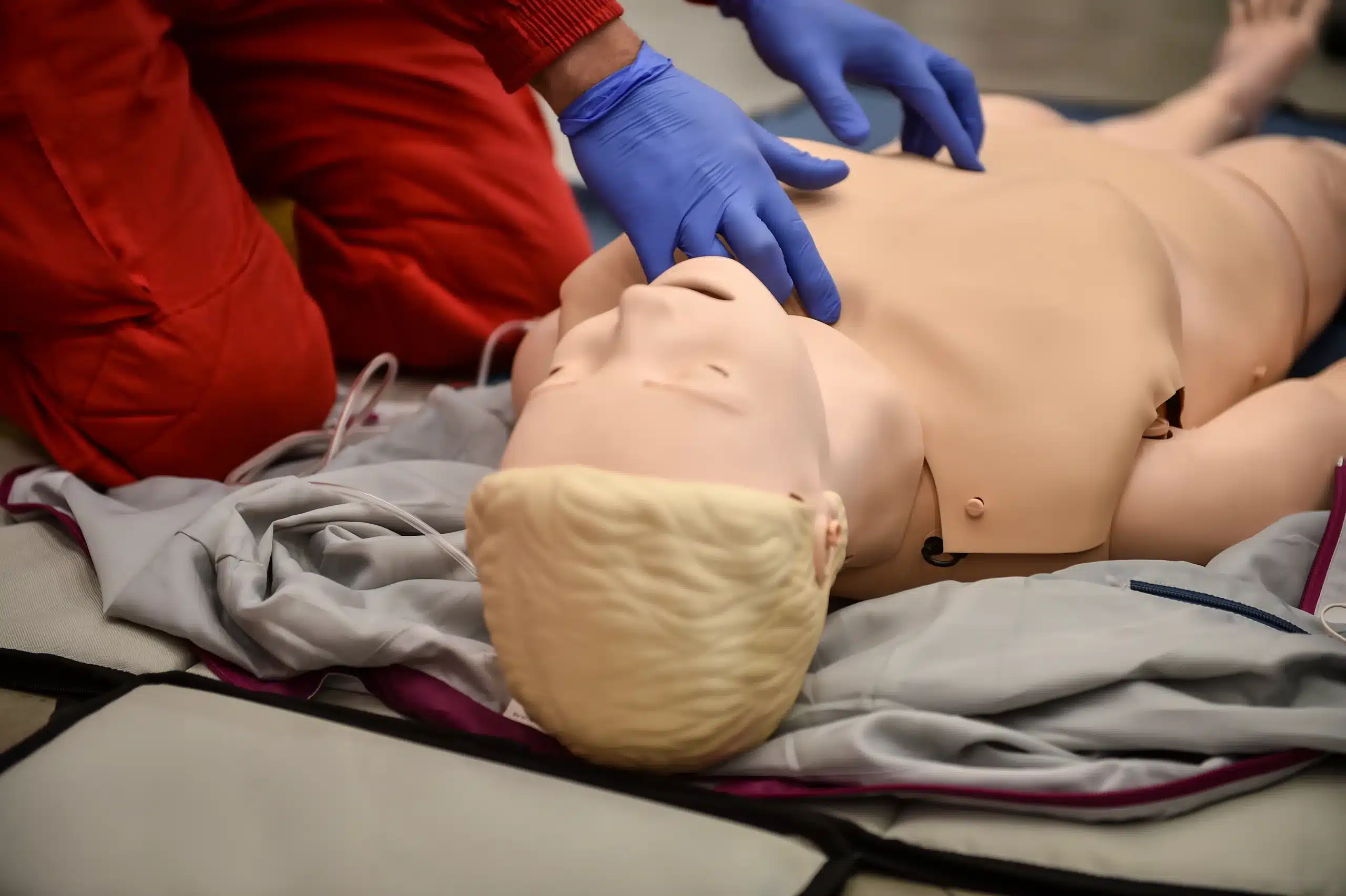Emergencies can happen anytime, anywhere. Would you know what to do if someone suddenly collapsed from cardiac arrest? CPR certification empowers you to take immediate, life-saving action in such critical situations. This post focuses on how CPR certification prepares you for emergency situations, equipping you with the skills and knowledge to respond effectively. We’ll break down the essential steps of CPR, including chest compressions, rescue breaths, and using an AED. We’ll also discuss the importance of overcoming hesitation in emergencies and how regular practice can build your confidence. Furthermore, we’ll explore the positive impact of CPR training on communities, creating a network of trained responders. Join us as we explore the world of CPR and discover how you can make a difference.
Key Takeaways
- CPR empowers you to save lives: Learning and practicing CPR equips you to respond effectively during cardiac arrest, significantly improving survival rates. Stay up-to-date with the latest guidelines to maintain proficiency.
- CPR-trained communities are safer communities: Widespread CPR training creates a network of prepared responders, fostering a culture of proactive safety and increasing the chances of timely intervention during emergencies.
- Get certified with Safety Training Seminars: We offer accessible and affordable American Heart Association courses in Alameda, CA, covering CPR, First Aid, BLS, ACLS, PALS, and NRP. Invest in your skills and confidence today.
What is CPR?
CPR stands for cardiopulmonary resuscitation. It’s a lifesaving technique used when someone’s heart stops beating, a condition known as cardiac arrest. CPR manually keeps blood and oxygen flowing to the brain and other vital organs until professional medical help arrives.
What is CPR and Why is it Important?
CPR combines chest compressions and rescue breaths to restore blood circulation. These actions mimic the heart’s pumping action, delivering oxygen throughout the body and preventing irreversible brain damage. Learning CPR empowers you to respond effectively during emergencies. It significantly increases the chances of survival, especially when administered immediately after cardiac arrest. CPR certification not only equips you with the skills to save lives but also instills the confidence to act quickly under pressure.
Why Immediate Action is Critical
Every minute without CPR decreases the likelihood of survival from cardiac arrest. Immediate CPR can double or even triple a person’s chance of survival. Sadly, many people who experience cardiac arrest outside of a hospital don’t receive timely assistance. Quick action is crucial. CPR bridges the gap between the onset of cardiac arrest and the arrival of paramedics, providing a vital lifeline and increasing the odds of a positive outcome. Learning CPR equips you to make a real difference in such critical situations.
Get CPR Certified
CPR certification equips you with the skills and confidence to respond effectively during medical emergencies. It empowers you to take immediate action when every second counts, potentially saving a life. But getting certified is just the first step. Maintaining your skills through regular practice is crucial for providing effective assistance in real-life situations.
Key Training Components
CPR training isn’t just about learning the mechanics; it’s about building the confidence to act in emergencies. As the Red Cross explains, CPR (Cardiopulmonary Resuscitation) is a life-saving technique used when someone’s heart stops beating effectively. Comprehensive CPR classes teach you to recognize cardiac arrest symptoms, perform chest compressions and rescue breaths, and use an AED (Automated External Defibrillator). This knowledge provides a strong foundation for responding effectively under pressure. Knowing what to do instills a sense of preparedness and reduces hesitation in critical moments.
Practice Your Skills
Regular practice is essential for maintaining proficiency and confidence in your CPR skills. Just like any other skill, CPR requires ongoing practice and reinforcement to stay sharp. Active participation in scenarios and drills helps solidify the steps and builds muscle memory. CPR training often includes hands-on practice and simulated scenarios, allowing you to apply your knowledge in a safe and controlled environment. This practical experience is invaluable for ensuring you can perform CPR effectively when faced with a real emergency. Consistent practice builds confidence and reduces the likelihood of freezing up under pressure.
Essential CPR Skills
CPR involves a series of steps designed to increase the chances of survival during cardiac arrest. Let’s break down these essential skills:
Recognize Cardiac Arrest
CPR (Cardiopulmonary Resuscitation) is a life-saving technique used when someone’s heart stops beating effectively. This condition, called cardiac arrest, means the heart can’t pump blood to the brain and other vital organs. Recognizing the signs of cardiac arrest is the first, crucial step. Look for unresponsiveness, absence of normal breathing, and no pulse. Quick action is vital.
Perform Chest Compressions
Chest compressions are the core of CPR. They mimic the heart’s pumping action, circulating blood to vital organs. Effective compressions involve pushing down firmly on the center of the chest at a rate of 100-120 compressions per minute, aiming for a depth of about two inches for adults. Proper technique is crucial for effective CPR. Consistent practice helps build the muscle memory needed to maintain the correct rhythm and depth during a high-stress situation.
Administer Rescue Breaths
Along with chest compressions, rescue breaths are a key component of full CPR. These breaths provide oxygen to the person’s lungs, further supporting circulation. After every 30 chest compressions, give two rescue breaths. This combination of compressions and breaths is especially important for children and infants, who are more likely to experience breathing problems during cardiac arrest. Learn more about administering rescue breaths during CPR.
Use an AED
An AED (Automated External Defibrillator) is a portable device that can analyze the heart’s rhythm and deliver an electric shock if needed to restore a normal heartbeat. CPR training often includes instruction on using an AED, which should be used in conjunction with CPR if available. Knowing how to quickly locate and operate an AED can significantly improve the chances of survival. AEDs are becoming increasingly common in public places, making this skill even more valuable.
Build Confidence with CPR Training
CPR training does more than just equip you with life-saving skills; it builds the confidence to act decisively when faced with an emergency. Knowing how to respond effectively can be the difference between life and death, especially in those critical first few minutes.
Overcome Hesitation in Emergencies
Hesitation during emergencies is a common reaction, often fueled by misconceptions about CPR. Addressing these myths through training empowers you to act confidently and effectively. Quality CPR training dispels uncertainty and provides the knowledge and skills necessary to intervene when needed. Accessible CPR training empowers individuals to provide immediate care while waiting for professional medical personnel.
Prepare for Emergencies
Emergency preparedness goes beyond CPR skills to include using an Automated External Defibrillator (AED). CPR training often incorporates AED instruction, teaching you how to use this device that can potentially restart a heart. Getting CPR and First Aid certified is a practical step towards being truly prepared for a range of emergency situations. This comprehensive approach ensures you’re not only knowledgeable but also equipped to handle various scenarios effectively.
How CPR Improves Survival Rates
Learning CPR can truly make a difference in life-or-death situations. It equips you with the skills to respond effectively during cardiac arrest, significantly improving the odds of survival. Let’s explore how CPR training translates to better outcomes.
CPR Effectiveness Statistics
CPR dramatically increases the chances of survival, especially when performed immediately. Every minute without CPR decreases the chance of survival, as emphasized by the American Red Cross. Effective bystander CPR can double or even triple survival rates in cardiac arrest cases. With about half a million cardiac arrests occurring each year in the US, knowing CPR can be the deciding factor for many, potentially doubling or tripling their chance of survival.
Debunking CPR Myths
Several misconceptions about CPR can prevent people from taking action. One common myth is that only healthcare professionals can perform CPR. This isn’t true. CPR training is accessible to everyone and empowers individuals to provide immediate care while waiting for professional medical help. Another myth is that CPR always revives someone in cardiac arrest. While CPR is a life-saving technique, it’s important to have realistic expectations. Even if CPR doesn’t immediately revive someone, it can still maintain vital blood flow, increasing the chances of successful resuscitation by paramedics. Finally, some believe you must be certified to perform CPR. While certification provides valuable training, it’s not a prerequisite for acting in an emergency. Providing any form of CPR is better than doing nothing at all.
Who Needs CPR Certification?
CPR certification equips individuals with the life-saving skills to respond effectively during medical emergencies. While beneficial for everyone, certain professions particularly benefit from this training.
Healthcare Providers
Healthcare professionals, including doctors, nurses, and medical assistants, are often the first line of defense in medical crises. CPR certification is fundamental to their roles, enabling them to provide immediate care during cardiac arrest or respiratory emergencies. Solid CPR skills are essential for anyone working in healthcare. A deep understanding of CPR principles and techniques allows these professionals to deliver high-quality care and potentially save lives. This foundational training is crucial for positive patient outcomes.
Educators and Childcare Workers
For educators and childcare providers, CPR certification is often a requirement. These professionals are entrusted with the safety and well-being of children, making CPR training essential. Effective CPR instruction empowers educators and childcare workers to act decisively, providing immediate care until professional medical help arrives. This preparedness creates a safer environment for children, giving parents and guardians peace of mind. Instructor guidance and feedback are invaluable in preparing these professionals for real-life emergencies.
First Responders and Public Safety Personnel
Police officers, firefighters, and other first responders are frequently the first to arrive at the scene of an accident or medical emergency. CPR certification is paramount, allowing them to administer life-saving aid before other medical personnel arrive. Their ability to perform CPR effectively can significantly impact survival rates, especially in time-sensitive situations. The role of CPR instructors in training first responders is critical, ensuring these individuals possess the skills and confidence to perform CPR effectively under pressure. This specialized training plays a vital role in improving outcomes. High-quality CPR training is a key reason why many pursue CPR instructor certification, ensuring this life-saving knowledge is passed on to those on the front lines. Proper CPR training can be the difference between life and death, making it a crucial skill for all first responders.
Maintain Your CPR Skills
CPR isn’t a learn-it-and-forget-it skill. Regularly refreshing your training is key to staying prepared and confident in an emergency.
Take Refresher Courses
Scheduling refresher courses is essential. CPR guidelines and techniques can change as new research emerges. Refresher courses keep your skills sharp and ensure you’re up-to-date on the latest best practices. Think of it like renewing your driver’s license—it’s a periodic check-in to make sure you’re still road-ready. With CPR, you’re ensuring you’re “emergency ready.” At Safety Training Seminars, we offer a variety of American Heart Association courses to help you stay current.
Stay Up-to-Date on Guidelines
Beyond formal refresher courses, staying informed about the latest CPR guidelines is crucial. Organizations like the American Heart Association regularly update their recommendations. Following these updates ensures your techniques remain effective and aligned with current best practices. You can check the AHA website for the latest information and consider subscribing to relevant newsletters or publications to stay in the loop. Even small changes in technique can make a big difference in an emergency.
CPR’s Community Impact
CPR certification empowers individuals to save lives, but its impact goes beyond personal preparedness. It strengthens communities by creating a network of trained responders and fostering a culture of proactive safety. Let’s explore how CPR training transforms communities into safer, more resilient places.
Build a Network of Responders
CPR training creates a network of people ready to respond to emergencies in their communities. As more individuals become CPR certified, the likelihood of a cardiac arrest victim receiving immediate assistance increases. This network of trained responders acts as a safety net, providing crucial support until professional medical help arrives. Think of it as a ripple effect—each certified person strengthens the community’s ability to respond to emergencies. This increased availability of CPR-trained individuals directly translates to a higher chance of survival for cardiac arrest victims. Encouraging local healthcare providers to offer affordable CPR training, especially in underserved areas, can further enhance community readiness.
Improve Community Safety
Widespread CPR training plays a vital role in improving overall community safety. Initiatives like the CPR Equality Initiative highlight the importance of accessible training. Ensuring that CPR training reaches everyone, including those in remote or underserved areas, creates a more resilient and prepared population. Mobile training units can be particularly effective in overcoming transportation barriers and making training more accessible. This approach increases the number of trained responders and strengthens a community’s ability to handle cardiac emergencies. By promoting widespread CPR training, communities invest in their safety and well-being, creating environments where people are equipped to respond to life-threatening situations.
Get Certified with Safety Training Seminars
Ready to gain the skills and confidence to respond effectively in emergencies? Safety Training Seminars offers a wide range of American Heart Association courses right here in Alameda, CA. We make it easy to become certified in CPR, First Aid, BLS, ACLS, PALS, and NRP. Our courses equip you with the knowledge and hands-on practice you need to make a real difference.
Choosing the right CPR certification course is a crucial first step. We understand that proper training is vital and can make a big difference in an emergency (ProCPR). Our experienced instructors guide you through essential techniques, from recognizing cardiac arrest to performing chest compressions and rescue breaths. We also cover how to use an AED (automated external defibrillator). You’ll learn in a supportive environment designed to build your confidence and prepare you to act quickly and effectively when every second counts. Getting your CPR and First Aid certification is a smart way to be prepared (CPR Care).
Beyond the technical skills, our training empowers you to overcome hesitation in emergencies. Studies show that CPR training not only teaches skills but also builds the confidence to act (My CPR Now). Knowing CPR gives you the confidence to potentially save a life (Red Cross). This confidence can be transformative, allowing you to respond decisively in critical situations. CPR certification is an important, life-saving skill (CPR Classes).
At Safety Training Seminars, we’re committed to providing high-quality training at the lowest prices in Alameda County. We offer discounts for group classes and ensure you receive your certification card the same day you complete your CPR training. We also provide EMSA Child Care Health & Safety training, a vital certification for childcare providers in California. Whether you’re a healthcare professional seeking BLS, ACLS, PALS, or NRP certification, or an individual wanting to learn CPR and First Aid, we have the right course for you. Visit our website to learn more about our low price guarantee and register for a class today.
Related Articles
- Why CPR is Essential for Saving Lives
- The Importance of CPR in Saving Lives – Alameda CPR Classes
- The Science Behind Effective CPR: A Comprehensive Guide
- CPR Training in Oakland: Your Guide to Certification – Alameda CPR Classes
- Free CPR Classes: Your Guide to Life-Saving Skills – Alameda CPR Classes
Frequently Asked Questions
What does CPR involve, and how does it work? CPR involves chest compressions and rescue breaths that circulate oxygenated blood to the brain and vital organs when the heart stops beating. Chest compressions mimic the heart’s pumping action, while rescue breaths provide oxygen. This combined action keeps vital organs functioning until professional medical help arrives.
Why is immediate CPR so important? Immediate CPR is crucial because every minute without it significantly reduces the chances of survival from cardiac arrest. Quick action can double or even triple a person’s survival rate. CPR bridges the critical time between the onset of cardiac arrest and the arrival of paramedics, maintaining vital blood flow and oxygen to the brain.
Who should get CPR certified? While CPR training benefits everyone, it’s especially important for healthcare providers, educators, childcare workers, first responders, and other public safety personnel. These individuals are often in positions where they might need to respond to medical emergencies. However, anyone can learn CPR and be prepared to assist in a crisis.
How often should I renew my CPR certification? CPR guidelines and best practices can change, so renewing your certification through refresher courses is essential. These courses ensure your skills are up-to-date and that you’re prepared to respond effectively in an emergency. Check with your certifying organization for recommended renewal timelines, which are typically every two years.
Besides formal training, how can I stay up-to-date on CPR techniques? Staying informed about the latest CPR guidelines is important even between refresher courses. Organizations like the American Heart Association regularly publish updated recommendations. Following these updates, subscribing to relevant newsletters, and accessing online resources can help you maintain current knowledge and ensure you’re using the most effective techniques.


